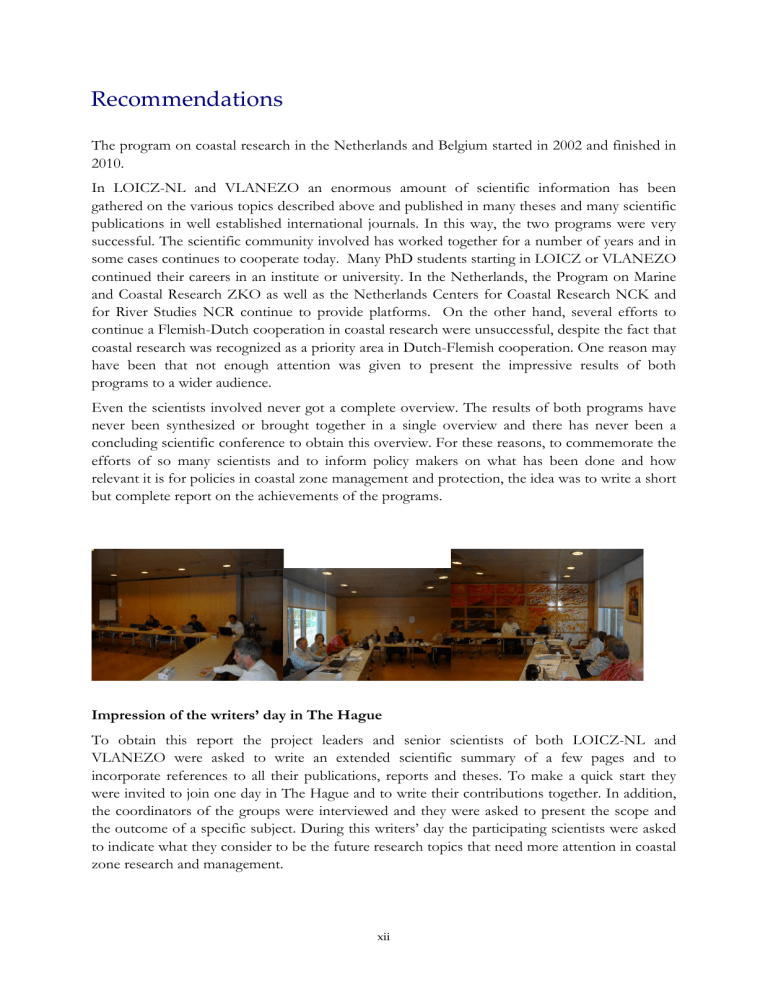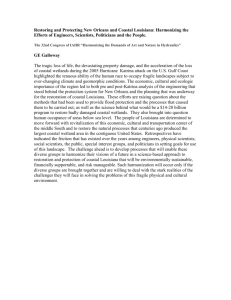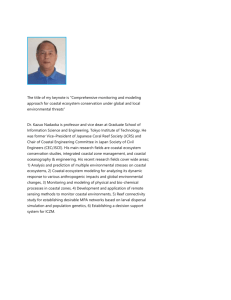Recommendations
advertisement

Recommendations The program on coastal research in the Netherlands and Belgium started in 2002 and finished in 2010. In LOICZ-NL and VLANEZO an enormous amount of scientific information has been gathered on the various topics described above and published in many theses and many scientific publications in well established international journals. In this way, the two programs were very successful. The scientific community involved has worked together for a number of years and in some cases continues to cooperate today. Many PhD students starting in LOICZ or VLANEZO continued their careers in an institute or university. In the Netherlands, the Program on Marine and Coastal Research ZKO as well as the Netherlands Centers for Coastal Research NCK and for River Studies NCR continue to provide platforms. On the other hand, several efforts to continue a Flemish-Dutch cooperation in coastal research were unsuccessful, despite the fact that coastal research was recognized as a priority area in Dutch-Flemish cooperation. One reason may have been that not enough attention was given to present the impressive results of both programs to a wider audience. Even the scientists involved never got a complete overview. The results of both programs have never been synthesized or brought together in a single overview and there has never been a concluding scientific conference to obtain this overview. For these reasons, to commemorate the efforts of so many scientists and to inform policy makers on what has been done and how relevant it is for policies in coastal zone management and protection, the idea was to write a short but complete report on the achievements of the programs. Impression of the writers’ day in The Hague To obtain this report the project leaders and senior scientists of both LOICZ-NL and VLANEZO were asked to write an extended scientific summary of a few pages and to incorporate references to all their publications, reports and theses. To make a quick start they were invited to join one day in The Hague and to write their contributions together. In addition, the coordinators of the groups were interviewed and they were asked to present the scope and the outcome of a specific subject. During this writers’ day the participating scientists were asked to indicate what they consider to be the future research topics that need more attention in coastal zone research and management. xii Their recommendations are: - To study the behavior of coastal (eco)systems under extreme meteorological conditions. It is more and more recognized that most of our information and knowledge that is based on data from ships has been gathered below wind speed 7. However, it is well recognized that the behavior and transport of, for instance, suspended particulate matter and sand is completely different under stormy conditions than during quiet weather. - Technological developments make it possible nowadays to make measurements in the field during extreme conditions. Another advantage of these Coastal Observatories with automatic sensors is that the sampling frequency for some parameters is shortened from biweekly to every 30 seconds. In this way, the short term variability of for instance suspended particulate matter can be studied in detail. - To study the predictability and resilience of coastal (eco)systems. Like the weather, it is recognized that the predictability of various parameters in coastal ecosystems is limited. The structure within an ecosystem can change quickly from one steady state to another and returning to the previous state can be very difficult. What is causing these changes (the so-called tipping points) and what the impact will be on the stability and functioning of the ecosystem and the ecosystem services is still largely unknown. - To integrate physical activities, for instance, for protection against flooding, with ecosystem and socio-economic research and knowledge. Many coastal countries are planning or have already developed projects to protect their coastal zones against flooding and the rising sea level. Making dikes higher and higher is not possible and often very costly, especially the maintenance. In other words, not only hard stones and fixed defense structures but also where possible soft defense structures (e.g. sand) in such a way that it moves with the forces of nature and takes into account the local ecology. This concept is called Building with Nature: integrating the knowledge of biology, ecology, morphology socio-eonomic developments and eco-technology to come up with tailormade solutions for specific areas, makes it possible to develop sustainable solutions. Carlo Heip Remi Laane xiii








